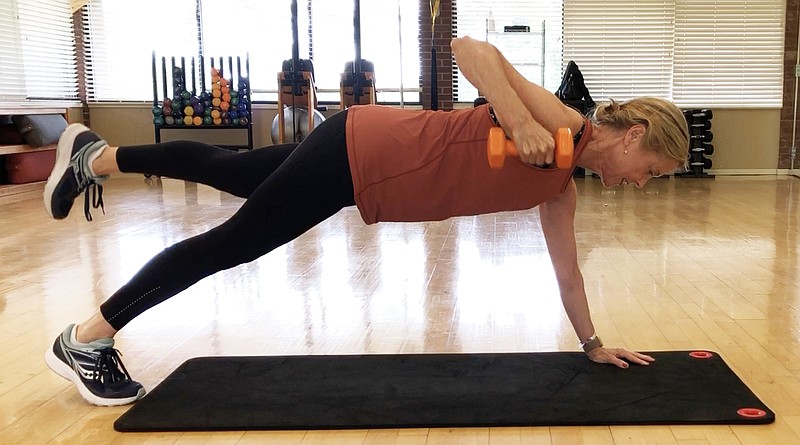The algorithms that produce advertisements for social media, television and pop-up notifications are incredibly accurate. Twenty years ago, whatever algorithm tracks me produced ads for nutritional supplements, workout gear and golf. These days, I find myself quizzically staring at notifications for testosterone boosters, investment vehicles and golf.
It's funny how some things change while others stay the same. This week, I will discuss the impact of testosterone and how to maximize the body's natural production to improve exercise adherence. Plus, I will share a new fitness move designed to increase testosterone production through muscle building.
As many know, testosterone is a naturally produced hormone that affects libido, bone mass, fat distribution, muscle mass and strength. Every human produces testosterone in different levels throughout life based on age, muscle mass, workout habits and other factors.
Testosterone levels decline naturally with age in men and women, but strength training can (and does) slow the decline and even increase production in some cases. Often touted as the "fountain of youth" by pharmaceutical companies, testosterone replacement therapy is a medical option for those with significantly reduced levels.
Knowing that there's a daily fluctuation in testosterone levels can help people plan and stick with regular workouts.
In general, testosterone levels rise to their peak in morning and slowly fall throughout the day. Many people also experience a small spike in the evening before their sleeping hours. This information is relevant because workout performance should, theoretically, improve when testosterone levels are higher. Awareness is heightened, energy levels are peaking, and the exerciser will feel more strength in working muscles.
For this reason, I generally recommend that older adults exercise first thing in the morning.
A morning workout routine not only maximizes efficiency from a hormonal perspective, but it prevents other daily responsibilities from interfering. Morning tends to be the most reliable time to set aside for personal care, before work and family activities begin.
Strength training can help to raise baseline testosterone levels, because it builds muscles. This week's exercise is a fantastic option for muscle building, as the entire body has to engage and stay flexed to maintain the prescribed position.
The Total Body DB Row might not be appropriate for beginners as presented, but there are modifications to reduce the intensity.
1. Select a medium weight dumbbell.
2. Get into the "up" phase of a pushup with the dumbbell in your right hand.
3. Lift your left foot off the ground a few inches.
4. Perform a one arm row by pulling the dumbbell up toward your rib cage with your right hand.
5. As you reach the top of the movement, pause for a second, then slowly lower the dumbbell almost to the floor. Do 10 repetitions.
6. Switch sides and repeat. Do two sets of 10 on each side.
The Total Body DB Row is a great way to drive testosterone production, but it is best if performed when energy levels are high.
The movement can be modified by placing a knee on the floor, as this will reduce the balance aspect significantly. For the first few sets, try performing the movement with both knees on the floor, then one knee, then move to the full position. You'll feel energized and accomplished!
Matt Parrott is glad to hear from readers. Send him questions or share a story about your pandemic workouts at
vballtop@aol.com
